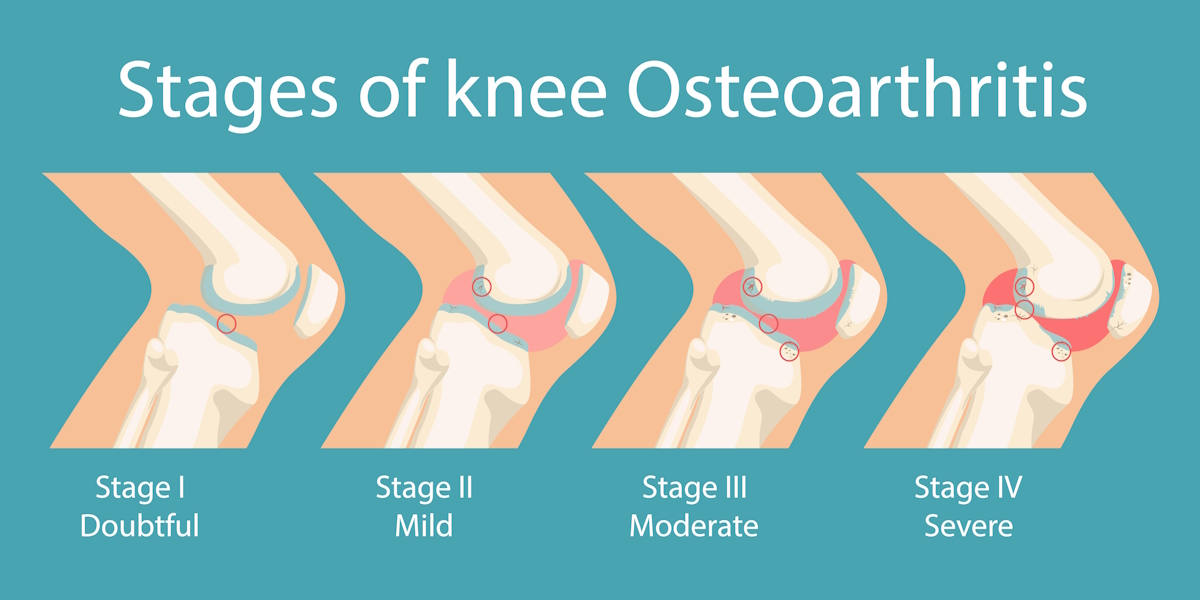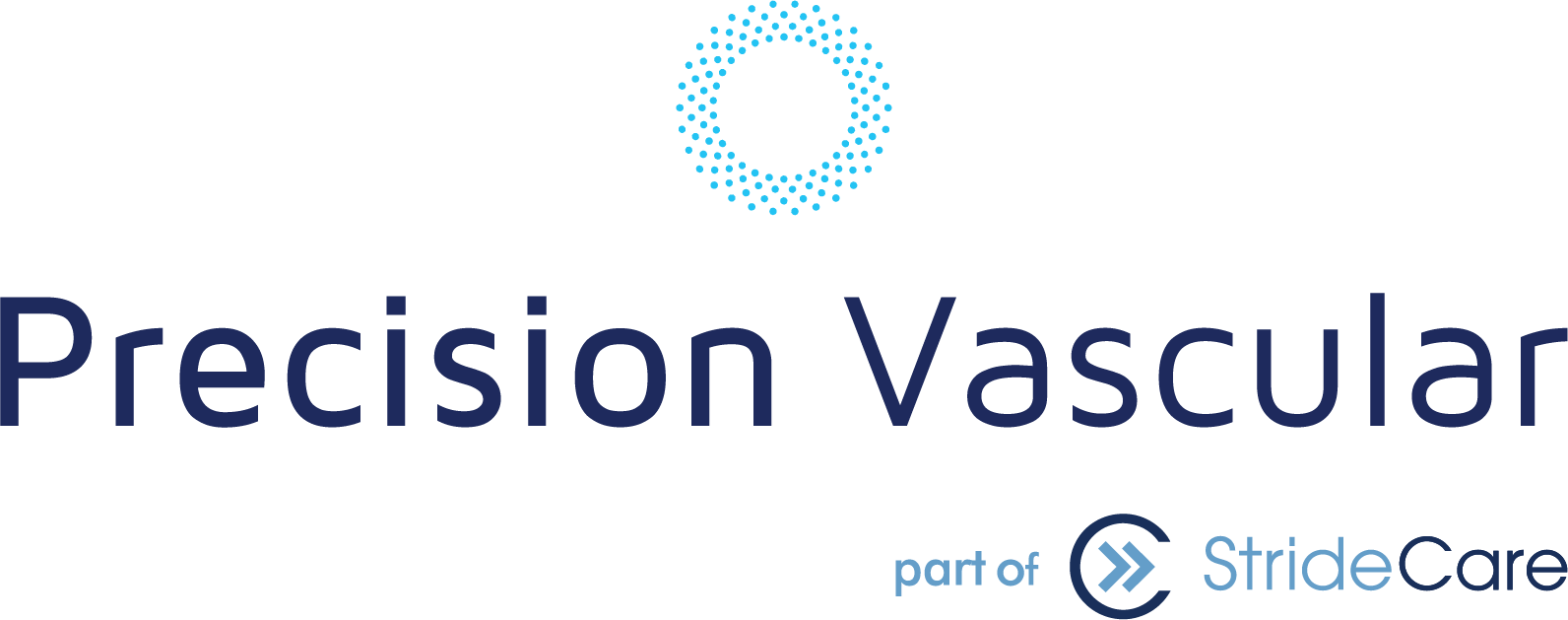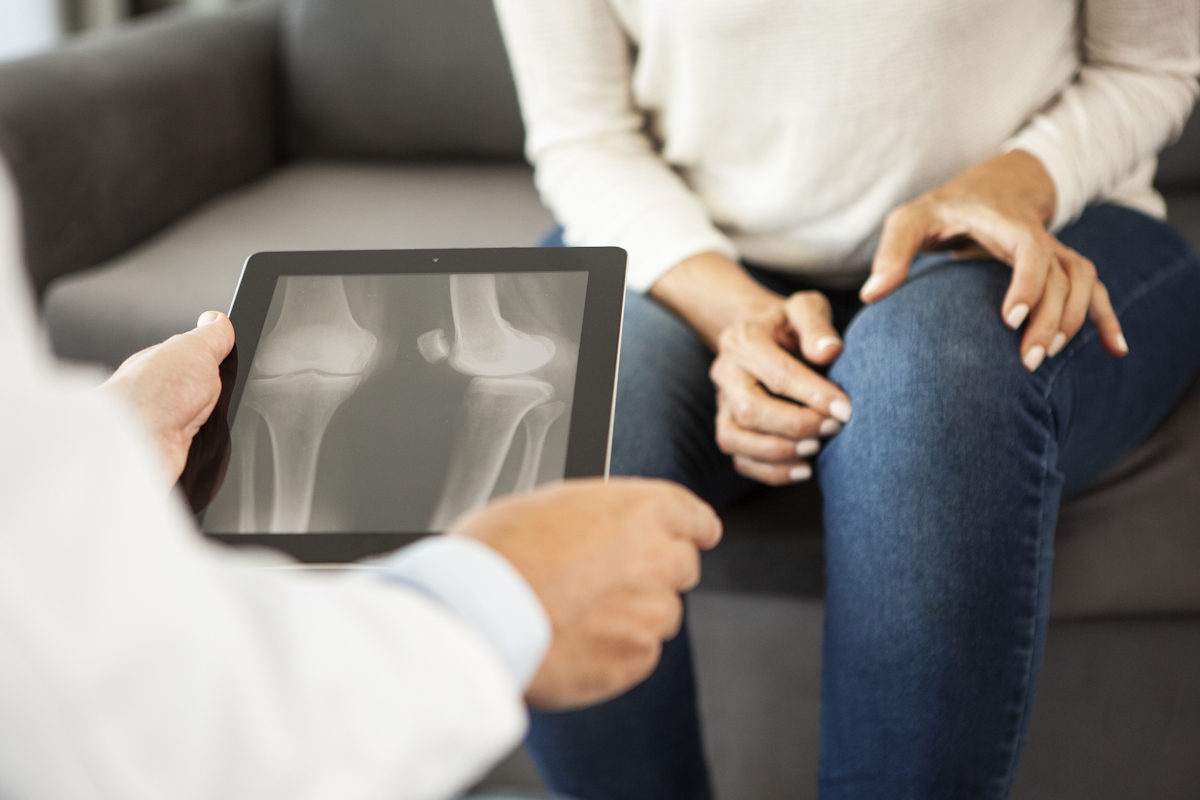Did you know more than 32.5 million Americans suffer from knee osteoarthritis? Sadly, many of them don’t recognize the signs or don’t want to admit they might have a problem until the disease progresses to the point where it is painful and difficult to treat. Like most conditions or diseases, osteoarthritis isn’t something you suddenly wake up with one day. It is the most common form of arthritis and one of the leading causes of disability—especially in older adults—and it goes through several stages. At first, your discomfort may be so minor that you don’t give it a second thought. But even if it’s not impacting your quality of life and the activities you love to do, it’s important to pay attention to what your knees are telling you so that you know when to take action.
That begs the question: When is best to take action? Your friends here at Precision Vascular have put together this easy-to-understand guide to help you understand the 4 common stages of osteoarthritis so you can seek help sooner rather than later.
Do Any of These Knee Osteoarthritis Symptoms Sound Familiar?
- Mild to severe knee pain
- Limited range of motion
- Unstable knee joint (feels like it will buckle)
- Knee locking, popping, and sticking
- Stiffness, especially in the morning or after inactivity
- Inflammation
- Creaking, crackling, and grating sensations
- Bone spurs
There is an alternative to solve knee osteoarthritis. Call 866-552-4866 to schedule a consultation with Precision Vascular’s expert physicians. Appointment
Knee Osteoarthritis Only Gets Worse With No Treatment
Osteoarthritis (OA) is a degenerative joint disease that isn’t life-threatening but can quickly make life uncomfortable for you or a loved one. It is commonly referred to as “wear and tear” arthritis because it develops in joints, most commonly hands, hips, and knees, slowly over time due to injury, illness, and overuse. The knee is of particular concern because all of us use our knees for everything—running, walking, jumping, bending, sitting, and standing. While these seem like simple tasks for such a large joint to handle, what many people don’t realize is that forces transmitted across the knee joint during normal walking range between 2 and 3 times a person’s body weight.
That means if you weigh 200 pounds, your knee is actually supporting 400 to 600 pounds. Additional body weight increases the pressure that the knee supports. It places a considerable amount of strain on the joint itself and can lead to many, if not all, of the symptoms above.
Risk Factors for Knee Osteoarthritis
Cartilage damage is often the primary concern for knee osteoarthritis. This strong and flexible connective tissue acts as a shock absorber and prevents the bones and joints in the knee from rubbing together. But your cartilage can wear thin over time and become injured or damaged. As a result, joints that used to move freely don’t work quite like they used to. But cartilage damage isn’t the only risk factor for osteoarthritis. Others include:
- Age — Osteoarthritis can affect anyone at any age, but it is most common in people over 50.
- Gender — Osteoarthritis is more common in women.
- Genetics — It is possible to inherit an increased risk of developing osteoarthritis.
- Injuries and repeated stress — Injuries from sports or jobs that continually place added pressure on our knees lead to normal wear and tear that can become osteoarthritis.
Here Are the 4 Stages of Osteoarthritis

Stage 1: Doubtful or Minor
With this initial stage, you may be on the borderline of a completely healthy knee joint and one with minor signs of wear and tear that cause little to no pain at all. In fact, you may pass off any mild discomfort as overuse from a particular activity, such as a weekend trail run or a day of gardening.
Without symptoms, there are no treatment options to consider. Your doctor will likely take a wait-and-see approach and suggest altering your current activities to rest your knees and slow the progression of arthritis.
Stage 2: Mild or Minimal
If you were to get an X-ray of your knee in this stage, you would likely see increased bone spur growth in the joint and a slight narrowing of the space between your joints. While the bones aren’t anywhere close to rubbing or scraping against each other, you’ll experience more pain than the previous stage. Your doctor might suggest wearing a brace to provide additional support and protection. Non-steroidal anti-inflammatory drugs and slight lifestyle changes such as weight loss, shoe inserts, strength training, and lower-impact exercises can help.
A few telltale osteoarthritis symptoms at this stage include:
- Pain during activity or immediately after
- Stiffness in and around the affected knee
- Difficulty bending or straightening the knee
- Limited range of motion
- Tenderness when kneeling or bending
Stage 3: Moderate
Cartilage is still intact, smooth, and relatively healthy compared to previous stages. Now, the affected area is beginning to erode. As a result, the space between the bone and joint becomes narrower and inflamed, and you will notice increased discomfort and stiffness during normal activities such as walking, bending, and straightening your leg. More bone spurs could develop, and the already present ones could grow. Now that your osteoarthritis progresses, your doctor may start you on a prescription medication routine to help you deal with the increased pain.
Many patients also turn to corticosteroid injections to relieve pain and limit inflammation. Lifestyle changes such as losing weight, altering your exercise routine, and physical therapy become increasingly important during this stage.
Stage 4: Severe
In most patients with severe osteoarthritis, there is little to no cartilage left to protect the joint. Bone spurs are significantly larger and in greater numbers, and the pain you’re experiencing is the direct result of bones rubbing against each other. This is the most painful stage of the 4 stages of osteoarthritis. Stiffness, swelling, and inflammation are at their worst, and movement is severely limited.
At this stage, non-invasive treatments such as physical therapy, medication, and strict lifestyle changes won’t be enough. Surgical options to relieve pain are on the table at this point, including joint replacement surgery.
Instead of Knee Surgery, Consider an Alternative
Studies consistently show that persistent osteoarthritis knee pain may be the result of undiagnosed inflammation in the lining of the knee, called synovium. Genicular artery embolization (GAE) is a minimally invasive alternative treatment that simply cuts off blood supply to the arteries in this area of the knee. As a result, inflammation is reduced, and the patient experiences pain relief quickly.
It’s important to note that genicular artery embolization does not cure osteoarthritis or treat underlying cartilage damage, but it does provide patients with long-lasting relief from their symptoms—provided that they seek a proper diagnosis in one of the earlier stages of osteoarthritis. The GAE procedure can only be performed by vascular specialists trained to treat arterial diseases and other vascular health challenges without surgery.
The good news is that the treatment is painless and takes roughly only 45-60 minutes to complete. It is an outpatient procedure and patients can go home within 1-2 hours after the GAE procedure.
Is GAE is right for you and your knee osteoarthritis symptoms? Request an appointment with Precision Vascular’s expert doctors to find out at 866-552-4866. Appointment
Here’s how GAE works:
- Patients are given medicine to help them feel sleepy and comfortable during the procedure.
- A small catheter is inserted into the artery in the patient’s upper thigh or ankle. Using X-ray guidance, the arteries receiving blood flow nearest the patient’s pain sight are located.
- With the catheter in position, small particles or agents are injected into the arteries to close them off and stop blood supply to the affected area. This process is 100% painless.
- The result is a quick, significant reduction in inflammation and related symptoms.
Turn to Precision Vascular for Relief of Knee Osteoarthritis Symptoms
It’s important to recognize osteoarthritis knee pain early and seek help from a medical professional who can guide you on your next steps. Sometimes, physical therapy and a little rest might be the solution in minor osteoarthritis situations. More often than not, additional intervention is necessary. For those who are worried if they will have to go through a total knee replacement, there is another solution. Genicular artery embolization is a game-changer when it comes to erasing inflammation in the knee and dramatically reducing the pain associated with OA.
Precision Vascular, established in 2012, became the first independent vascular and interventional radiology practice in North Texas. It has since experienced significant growth, expanding its specialty team to include vascular surgeons and vein specialists at multiple locations throughout the D/FW metroplex. The dedicated team of professionals at Precision Vascular are at the forefront of medical innovation and are dedicated to helping patients avoid the traditionally long and invasive surgeries that were previously utilized to treat vascular disease.
Precision Vascular’s specialists are committed to delivering outstanding and safe care with compassion and concern for all patients. For a consultation with one of our expert doctors, please contact us at 866-552-4866 or complete the appointment form.
Precision Vascular serves the D/FW area including Dallas, Mesquite, Craig Ranch, Sherman, Dennison, Arlington, Fort Worth, Southlake, South Dallas, North Dallas, Addison, Carrollton, Richardson, Garland, Highland Park, University Park, Park Cities, Plano, Frisco, Prosper, Allen, McKinney, Irving, Grand Prairie, Denton, Lewisville, Flower Mound, HEB, Hutchins, Duncanville, DeSoto, Cedar Hill, Lancaster, Cockrell Hill, and all North Texas.
Prior to starting any new treatment or questions regarding a medical condition, always seek the advice of your doctor or other qualified health provider. This information is not a substitute for professional medical advice.
*Patient stories are true. Names and/or photos may be changed to protect patient confidentiality.



